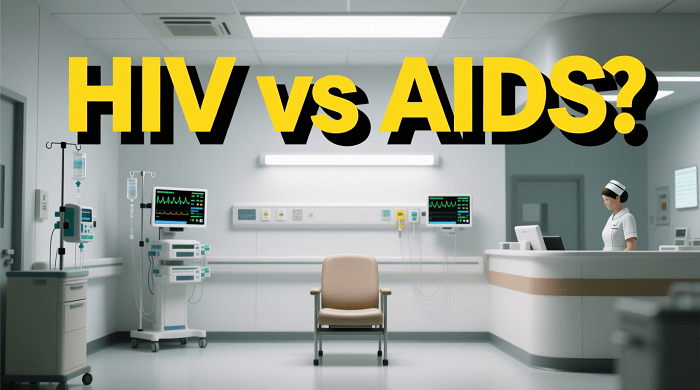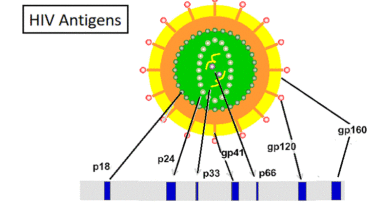HIV vs AIDS: the 5 Main differences?
Understanding the key differences between HIV vs AIDS is critical for health literacy and prevention. The difference between HIV (Human Immunodeficiency Virus) and AIDS (acquired immunodeficiency syndrome) is confusing for many. Some think HIV and AIDS are one condition. Actually, they are two different conditions, but they do go hand-in-hand. HIV is a virus that can lead to a condition called AIDS.
At one time, a diagnosis of HIV infection was considered a death sentence. Thanks to the development of new treatments, people with HIV at any stage today are living long, productive lives. It is no longer a death sentence.
Here are 5 main differences between HIV and AIDS:
- Nature of the Condition:
- HIV is a virus that attacks the immune system, specifically CD4 cells (T-cells).
- AIDS is a syndrome or a condition. It is the most advanced stage of HIV infection. This stage occurs after the virus has severely damaged the immune system.
- Timeline and Progression:
- HIV infection is the starting illness; called acute HIV infection.
- AIDS is a diagnosis that can occur years after the acute HIV infection if the virus is left untreated. This marks the progression to the late stage of the disease.
- Diagnosis Criteria:
- HIV is diagnosed by detecting the presence of the virus or its antibodies in the body (e.g., via a blood or saliva test).
- AIDS is specifically diagnosed when an HIV-positive person meets one of two criteria. The first criterion is having a CD4 cell count below 200 cells/mm$^3$ regardless of symptoms. The second is the presence of one or more AIDS-defining opportunistic infections or cancers, like Kaposi’s sarcoma or Pneumocystis pneumonia.
- Universality:
- Every person who has AIDS is, by definition, infected with HIV.
- Still, not every person infected with HIV will progress to develop AIDS, thanks to effective treatment with anti-retroviral therapy (ART).
- Contagiousness/Transmission:
- HIV is the transmissible agent—the virus itself can be passed from person to person through specific bodily fluids.
- AIDS is a condition resulting from the virus. The condition of AIDS is not directly transmitted. But, a person with AIDS (who has a high viral load) can transfer the HIV virus.
What is HIV
HIV is a virus that can lead to immune system deterioration. “ HIV” refers to Human Immunodeficiency Virus, as only humans can contract it. It attacks the immune system, leading to deterioration of the immune system, which becomes incapable of working.
Our immune systems can completely clear many viruses from our bodies. It’s not the case with HIV. Medications can control HIV very successfully by interrupting its viral life cycle, though.
What is AIDS?
AIDS is a condition, also called Acquired Immune Deficiency Syndrome. While HIV is a virus that can cause infection, AIDS is a condition. Contracting HIV can lead to AIDS.
AIDS develops when HIV has caused serious damage to the immune system.
Symptoms that vary from person to person. A person with a damaged immune system can’t fight infections.
These are called opportunistic infections, they include tuberculosis, pneumonia, and others.
An HIV infection doesn’t necessarily progress to AIDS. Many people with HIV live for years without developing AIDS. Using HIV treatment, a person can live with HIV a near-normal life span.
Can be Cured?
Because there is no cure, the HIV infection never goes away. HIV usually causes flu-like symptoms about two to four weeks after transmission. The immune system brings the infection under control, leading to a period of latency. The immune system can’t completely eliminate HIV, only control it for a time, which can last for years.
For further reading About HIV vs AIDS:
- Contact us here
- Read more about HIV




